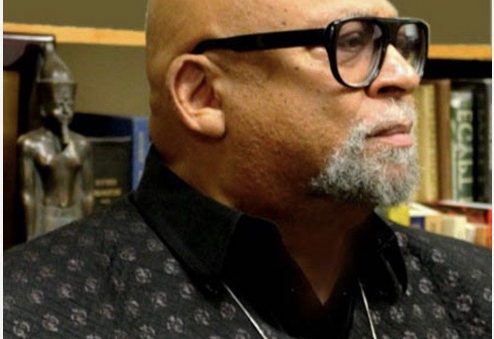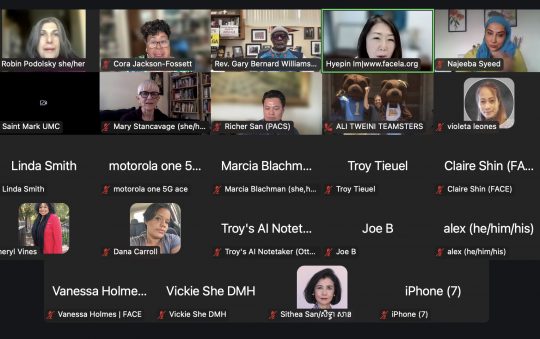
Few community members know the role of Clara Belle Williams in Las Cruces education, but one family made it their mission to get Williams and her legacy recognized by the state.
Alice Chavez Villa grew up at 722 N. Mesquite St., the home Williams, her husband Jasper Williams, and their three sons inhabited and owned for 41 years _ from 1933 to 1974.
Chavez Villa, 50, said she grew up knowing vaguely that Williams had owned the home, but didn’t know much about her legacy.
“Every now and then I’d see something on Clara Belle that would come out,” Chavez Villa told the Las Cruces Sun-News.
She said that a couple of years ago she began to piece together that Williams had a significant impact on education as a woman of color, but hadn’t done much with the information.
Chavez Villa has now spent months collecting data on Williams and her history.
Williams was born in 1885 and is known to be the first African American woman to graduate from New Mexico College of Agriculture of Mechanic Arts (now New Mexico State University) in 1937 with a bachelor’s degree in English. At the time, segregation was still rampant and Williams had to sit out in the hallway to listen to lectures. She wasn’t even able to attend her own graduation ceremony. In 2005, Feb. 13 was recognized as Clara Belle Williams Day by NMSU and the English building was renamed Clara Belle Williams Hall.
Williams was an educator in Texas and Vado, New Mexico before coming to Las Cruces.
She was a staple in the community _ creating Booker T. Washington School with Jasper in 1934, where she taught for 16 years before retiring from her 40-year career in education.
“I started out at the NMSU archives and pulled up everything that I could on Mrs. Williams,” Chavez Villa said. “It was very personal and fascinating to just uncover the hardships that she endured.”
The more Chavez Villa learned about Williams, the more parallels she discovered between the late educator and herself.
Chavez Villa graduated from NMSU and was the first member of her family to earn a degree, much like Williams. Chavez Villa attended Booker T. Washington as a child, from kindergarten to sixth grade, later returning as a teacher in 2000.
After leaving Booker T. Washington, Chavez Villa opened a tutoring program in 2002 called “One Room Schoolhouse.” She discovered that Williams had been educated in a one-room schoolhouse as a young girl more than 100 years earlier. Chavez Villa now works for the National Education Association of New Mexico.
When Williams had her first daughter on Jan. 21, 1995, she brought her home to 722 N. Mesquite. Her daughter is African American, like Williams.
Chavez Villa’s parents, Arturo and Marceline, had three children _ Alice, Arturo Jr and Lisa Hernandez, much like the Williams family who had three sons.
“I couldn’t help but tie in all the overlapping things of our families being intertwined in different aspects,” Chavez Villa said. “There’s so many little other details like that, that piece together.
“It just feels like home in every aspect: professionally, personally, historically.”
___
Creating a name
In August, Chavez Villa presented her findings about Williams and also her own family to the New Mexico Cultural Properties Board. With the help of NMSU and a letter of support from the City of Las Cruces, she made her case.
The board unanimously voted on Aug. 13 to enter 722 N. Mesquite as part of the registry for New Mexico historical properties, registering the home in the New Mexico State Register of Cultural Properties.
The home now stands with a shiny new plaque, declaring the home a historical site and recognizing it as the home of Clara Belle Williams.
Chavez Villa said she hopes this recognition brings awareness to Las Cruces Public Schools and the rest of the community about Williams and the work she did.
“You just have that sense of wow, you had an amazing pioneer, trailblazing woman that lived here,” Chavez Villa said. “Then (the deed) got passed down to, like I said, our family. It became much more than just a piece of paper. That warranty deed means a lot, and it’s something that I plan on keeping in the family.”
Now that Chavez Villa has gone through the recognition process, she plans to find Williams’ descendants to reach out to them. She found that Williams moved to Illinois in 1951 to follow her sons who became doctors in Chicago.
___
Honoring her own family
Chavez Villa did this project as much for her own family as she did for Williams herself.
She said it’s been especially significant to show her daughter, Tory, everything she’s learned about Williams _ a strong African American woman, just like her daughter.
“It gives her a piece of her that I can’t give her, as I’m Hispanic. And while she grew up (culturally) Hispanic, she looks African American,” Chavez Villa said. “It’s just a piece of her history that I think really has brought it home to her in a special way of feeling even more connected.”
Chavez Villa said another factor in motivating her on this journey was her father, Arturo Chavez, and his deteriorating health.
In March, he was first admitted into the hospital. Arturo would be in and out of the hospital for the rest of his life. Chavez Villa said this may have subconsciously been when she really buckled down to get the property recognized, for his sake.
The property was recognized in August and her father passed away almost exactly two months later on Nov. 12 at the age of 76.
“My father loved that home,” Chavez Villa said. “I just thought it’s too important. We need to get that home recognized, there’s too much history for it to go unnoticed.
“My dad really felt a sense of pride, because I just know that he loved being at home.”






